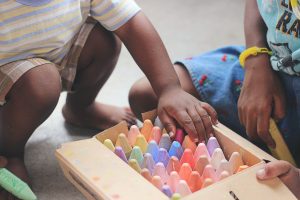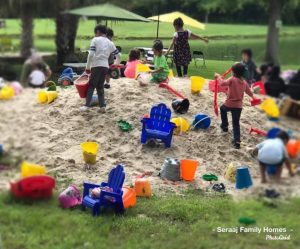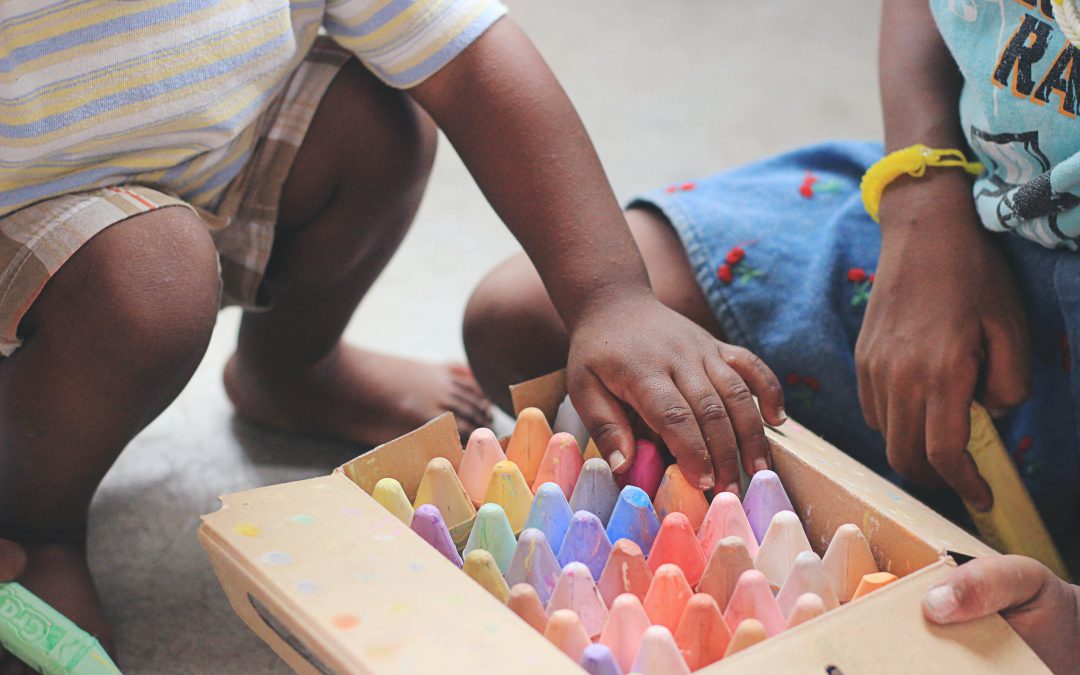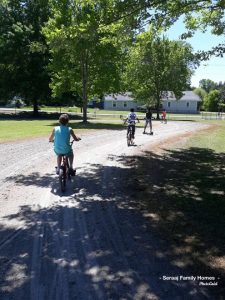By Shay Stinson | Edited by Intisar Seraaj
Playing is Therapy
Tell your kids to “grab the kickball and the sand buckets because we’re going outside to work it out!” This is a form of therapy: play therapy.

You can unlock a child’s imagination by creating a creative space for their expressions. (Photo by Tina Floersch on Unsplash)
Play therapy is not a new concept. For ages, children have used play therapy to solve problems, develop social skills, and explore curiosities. Children can learn therapeutic techniques like stress management, boost their self-confidence, and learn conflict resolution skills through playing with friends. For example, playing dress–up or dancing can boost a child’s self-esteem, playing kickball or dodgeball can teach them conflict resolution, and swimming or arts-and-crafts might help them with stress management. Although technology has changed how children play, being outside, using their imagination, and playing with non-tech toys is still one of the best ways for children to figure out the world and themselves.
Here are some of the various ways to use playing outside, playing with toys, and using imagination to help children develop life skills and as a therapy tool.
Let’s Move!
During her time as the First Lady of the United States, Michelle Obama launched a health and wellness campaign to combat childhood obesity by getting them more active. She traveled across the nation with her “Let’s Move” campaign challenging children to dance, play, and make healthy lifestyle choices.
Good habits for health and wellness start at infancy and are either developed or stifled throughout early childhood. Taking time to play with your kids and show them how to nurture wellness through physical activity and proper nutrition has the power to change generations of society. Let’s grab that sidewalk chalk and get out there! Here are more than 50 play therapy techniques, activities, and interventions to get you started: https://positivepsychology.com/play-therapy/.
Team Play
Besides participating in activities that improve your child’s physical health, there are activities that can develop their social and mental skills, which is also a hopeful byproduct of therapy. One form of play therapy that is helpful in achieving such goals is playing in a team. Most children are competitive and want to win, so using play therapy in group settings and playing games like kickball, basketball, and baseball can help children develop team cooperation and leadership skills. These activities can also be done individually. Such activities can slowly teach children how to adapt to playing with friends or how to create happiness and find joy within themselves.
Although activities like fishing, bowling, and swimming can be done in groups, they can also be solo activities that teach children similar concepts. However, these activities can also be used to teach children the importance of safety, boundaries, and resourcefulness. Playing hopscotch and jumping rope are activities that require little equipment and lots of imagination. Thus, aside from the physical health benefits, activities like these can also be used to teach counting, following instructions, and resilience.

Basketball and other team sports can be used to teach conflict resolution. (Photo by The Grandma Home House Retreat)
Sandbox and Sandplay Therapy
One specific for of play therapy is sandplay therapy, which is a combination of play therapy and art therapy. Adjunct to talk therapy, sandplay can be used to engage the human psyche towards natural healing. Through this form of therapy, a client can produce the manifestations of their thoughts using sand, water, and molds. Individually, a child can play in a sandbox to nurture creativity. Just give them a few shovels and pails and the possibilities are endless. Playing in a sandbox can also teach children patience and how to manage change. Sometimes sandcastles and mud pies get washed away with the rain, yet kids still rebuild them, trying different methods each time. This is teaching resilience and perseverance.

Children use imagination to create things and express their thoughts. (Photo courtesy of The Grandma Home House Retreat)
Emotional Wellness
Besides teaching life skills, play therapy is known to improve social-emotional wellness for children, just like traditional talk therapy. Social-emotional wellness includes the development of a child’s self-awareness, personal emotional management, and understanding of other people’s emotions. The benefits of play therapy to kids’ health and wellness are endless. To name a few, play therapy can be used to do the following: develop social skills, build self-esteem, improve communication, deal with grief from a loss, express emotions, and increase overall happiness. Recent studies have said that physically active children are happier and more expressive. Even depression is combated with physical and active play.
Fuel for Play
After some invigorating playtime, children are usually hungry and need calories to recharge! Partnering play therapy with proper nutrition can help children develop into well-rounded adults. Offering the right kinds of snacks and proper portions of snacks will add more benefits to play therapy. And don’t forget to have them drink water and other hydrating fluids.
Creativity is the key skill to using play therapy as a means to help children develop into holistically-well adults. Although we are accustomed to using technology to stay connected, playing, especially through outside activities, is a sure way to recharge your natural energy. Sometimes you have to put on your old dusty sneakers and get outside in the fresh open air and see what challenges can be solved through nature.


